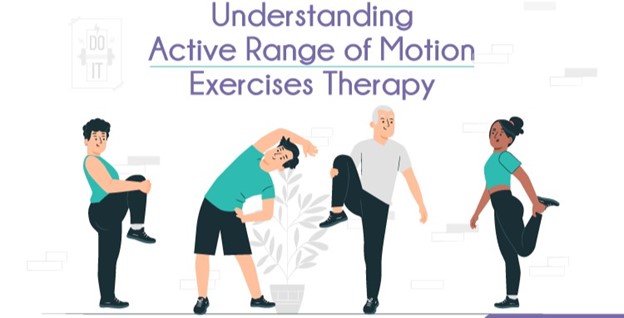A nurse is planning care for a client who is scheduled for a thoracentesis.
Which of the following actions should the nurse plan to take
Instruct the client to avoid coughing during the procedure
Inform the client that he will be NPO for 6 hr prior to the procedure
Position the client on the affected side for 4 hr following the procedure.
Place the client in the prone position during the procedure
The Correct Answer is A
The correct answer is choice A. Instruct the client to avoid coughing during the procedure.
A thoracentesis is a procedure that involves inserting a needle into the pleural space to remove excess fluid or air. Coughing can increase the risk of pneumothorax (collapsed lung) or bleeding during the procedure.
Choice B is wrong because the client does not need to be NPO (nothing by mouth) for 6 hr prior to the procedure. There is no risk of aspiration during a thoracentesis.
Choice C is wrong because the client should be positioned on the unaffected side for 4 hr following the procedure. This allows the affected lung to re-expand and prevents fluid from accumulating in the pleural space again.
Choice D is wrong because the client should not be placed in the prone position during the procedure. The prone position makes it difficult to access the pleural space and can compromise breathing.
Nursing Test Bank
Naxlex Comprehensive Predictor Exams
Related Questions
Correct Answer is {"dropdown-group-1":"C","dropdown-group-2":"C"}
Explanation
The nurse should first administer oxygen at 2 L/min via nasal cannula because the client has signs of hypoxemia (low oxygen saturation) and respiratory distress (increased respiratory rate) that may worsen the chest pain and myocardial ischemia. Oxygen therapy can help improve oxygen delivery to the heart muscle and reduce the workload of the heart.
The nurse should then administer sublingual nitroglycerin as prescribed because nitroglycerin is a vasodilator that can help relieve chest pain by dilating the coronary arteries and improving blood flow to the heart. Nitroglycerin can also lower blood pressure and reduce cardiac preload and afterload, which can decrease myocardial oxygen demand.
Other choices:
• Prepare the client for cardiac catheterization: This may be a later intervention if the chest pain persists or if the client has a confirmed myocardial infarction, but it is not the first priority for the nurse. Cardiac catheterization is an invasive procedure that involves inserting a catheter into a large artery and advancing it to the coronary arteries to visualize any blockages or stenosis. The procedure may also involve angioplasty or stent placement to restore blood flow to the affected area.
• Request a prescription for an increase in statin: This may be a long-term intervention to lower the client’s LDL cholesterol and prevent further plaque formation in the coronary arteries, but it is not an immediate intervention for chest pain. Statins are lipid-lowering drugs that can reduce the risk of cardiovascular events in clients with CAD, but they do not have a direct effect on chest pain or myocardial ischemia.
• Check a STAT cardiac troponin: This may be a diagnostic test to confirm or rule out a myocardial infarction, but it is not an intervention for chest pain. Cardiac troponin is a protein that is released into the bloodstream when there is damage to the heart muscle. Elevated levels of cardiac troponin indicate a myocardial infarction or other cardiac injury.
• Request a prescription for a beta-blocker: This may be an adjunctive therapy to reduce chest pain and prevent complications, but it is not the first-line intervention for chest pain. Beta-blockers are drugs that block the effects of adrenaline on the heart and blood vessels, which can lower heart rate, blood pressure, and myocardial oxygen demand. Beta-blockers can also prevent arrhythmias and reduce mortality in clients with CAD.
Correct Answer is A
Explanation

This instruction will help the client to prevent venous stasis and thrombosis, which are common postoperative complications. Range-of-motion exercises promote blood circulation and prevent muscle atrophy and contractures.
Choice B. “Use an incentive spirometer every 4 hours.” is wrong because it is not related to promoting circulation, but rather to improving lung expansion and preventing atelectasis and pneumonia. Using an incentive spirometer is also important for postoperative clients, but it does not address the question.
Choice C. “Remain on bed rest for 24 hours following the procedure.” is wrong because it is the opposite of promoting circulation.
Bed rest increases the risk of venous stasis, thrombosis, and pulmonary embolism. Postoperative clients should be encouraged to ambulate as soon as possible, unless contraindicated.
Choice D. “Place a pillow under your knees while in bed.” is wrong because it also impairs circulation and increases the risk of thrombosis.
Placing a pillow under the knees can cause pressure on the popliteal veins and reduce blood flow. Postoperative clients should avoid this position and keep their legs in a neutral or slightly elevated position.
Whether you are a student looking to ace your exams or a practicing nurse seeking to enhance your expertise , our nursing education contents will empower you with the confidence and competence to make a difference in the lives of patients and become a respected leader in the healthcare field.
Visit Naxlex, invest in your future and unlock endless possibilities with our unparalleled nursing education contents today
Report Wrong Answer on the Current Question
Do you disagree with the answer? If yes, what is your expected answer? Explain.
Kindly be descriptive with the issue you are facing.
